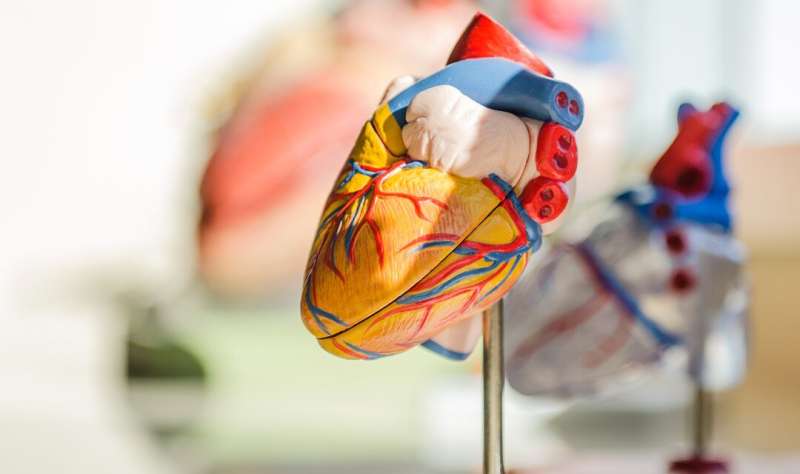
Advances in cardiac tissue engineering offer hope for an array of useful applications, from heart repair to disease modeling. As part of active, ongoing research related to bioengineering functional human organs, Adam Feinberg and his team are finding inspiration from the developing heart to rebuild human heart muscle.
Inside the adult human heart, the myocardium (muscular wall) is organized in a complex structure with layers of aligned cardiomyocytes (heart cells), wrapped in different orientations to support its pumping ability. It is formed during embryonic morphogenesis, where the heart starts as a linear tube and transforms into its four-chambered structure.
To better understand how cardiomyocytes interact with each other while they’re reorganizing inside of the embryo, Feinberg’s group engineered two-dimensional tissues using fibronectin micropatterns to identify and observe cell–cell and cell–extracellular matrix (ECM) interactions. Previous research has explored how cardiomyocytes organize into an aligned tissue; however, the individual physical, mechanical, and biochemical factors that drive cardiomyocyte alignment remain largely unknown.
“We were interested in exploring the multiple factors that influence structure formation, and ultimately function, in human cardiac muscle tissue,” explained Ivan Batalov, leader of the research recently published in Scientific Reports, and former materials science and engineering Ph.D. student. “In order to assess how heart muscle cells interact with each other versus how they interact with the ECM, we had to decouple their interactions, because they naturally happen together.”
https://youtube.com/watch?v=ZDWVih7zVCQ%3Fcolor%3Dwhite
The group’s research required a large amount of data, sophisticated analysis techniques and the development of a custom algorithm to process the data and extract useful information. Their results ultimately showed that both cell-cell and cell-ECM interactions play an important role in the formation of aligned myocardium.
“These results are exciting because they show how we can use insights from heart development to create biologically-inspired engineering design principles to rebuild human heart muscle,” said Feinberg, a professor of biomedical engineering and materials science and engineering. “This is important because normally, the adult heart cannot repair itself following injury or disease. We need to understand why this happens and determine how we can potentially direct regeneration.”
Big picture, these findings support ongoing efforts to engineer human heart tissue outside of an organism. Such tissues could be used to repair damaged or dead tissues for patients who’ve experienced a heart attack or are suffering from heart disease, the most common cause of death worldwide. They could also be leveraged during drug development to ensure more accurate testing (as opposed to animal testing) of a drug’s toxicity and effectiveness.
Source: Read Full Article
